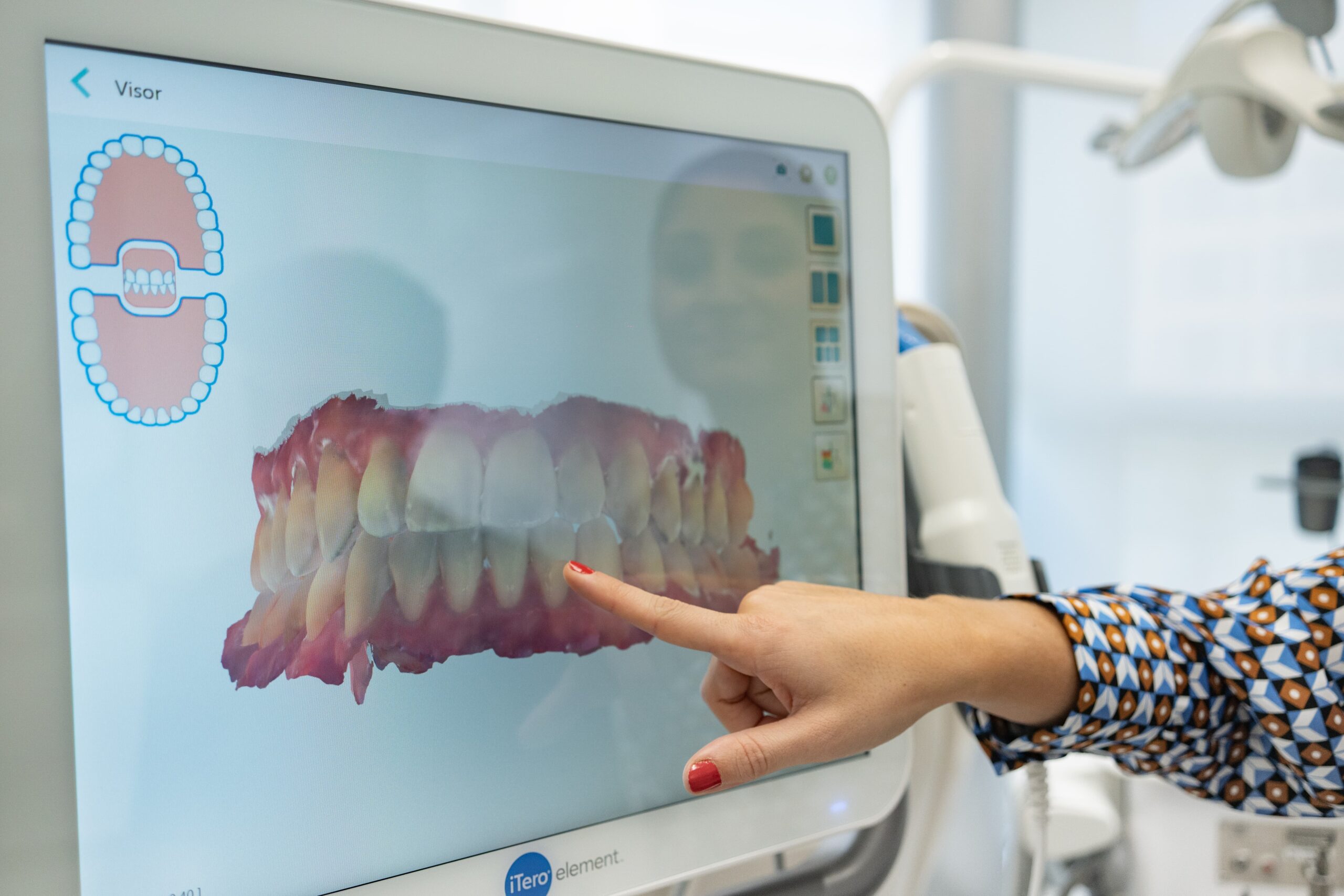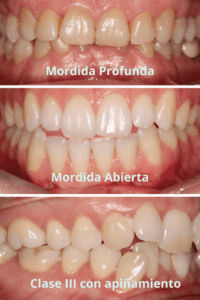A dental malocclusion is a condition in which the teeth do not fit together properly when the jaws are closed. This misalignment can affect both the function and appearance of the bite and can cause a variety of dental and health problems. Malocclusions can be caused by a variety of factors, including genetics, oral habits – such as thumb sucking, pacifiers or pushing teeth with the tongue – problems during dental development, premature loss of baby teeth, or trauma and injury.
Causes and symptoms of malocclusion
Causes (because we may have dental malocclusions) :
- Genetics (inherited from parents: shape of jaws, size of teeth, etc.)
- Prolonged oral habits in infancy (thumb sucking, prolonged use of pacifier or bottle)
- Premature loss of primary teeth (from decay or trauma)
- Abnormal tooth eruption (teeth erupting in incorrect positions)
- Facial trauma (blows affecting bone or tooth growth)
- Chronic respiratory problems (oral respiration, adenoid or tonsil hypertrophy)
- Skeletal discrepancies (e.g., too small an upper jaw or too large a mandible)
Symptoms (what the patient may notice or suffer):
- Difficulty in chewing or biting
- Abnormal wear of teeth
- Jaw pain or joint noises (clicking, locking)
- Headaches or neck pain (due to muscle tension)
- esthetic problems (crooked teeth, overbite, crossbite, etc.)
- Speech problems (in some cases)
- Frequent mouth breathing
Types of dental malocclusions
Vertical dental malocclusion (These are alterations in the vertical plane of the bite).
- Deep bite: the upper incisors excessively cover the lower incisors (the lower incisors may even touch the palate).
- Decreased overbite (edge-to-edge bite): the edges of the upper and lower incisors contact edge-to-edge, without overlapping.
- Anterior open bite: there is a vertical space between the upper and lower incisors, even if the patient closes his mouth (very typical in habits such as thumb sucking or oral breathing).
- Posterior open bite (less common): there is a vertical space between the molars or premolars when closing the mouth.
Transverse dental malocclusion (Alterations in the horizontal plane from one side to the other, right-left)
- Posterior crossbite: the upper teeth bite on the inside of the lower teeth (on premolars or molars). (Normally they should bite on the outside).
- Anterior crossbite (less frequent in transversal): an upper incisor bites inside a lower incisor.
Scissor bite: the upper teeth bite too far outside the lower teeth, without contact.
Dental or skeletal asymmetry: the dental midline does not coincide between arches or with respect to the face.
Sagittal malocclusion (Alterations in the anteroposterior plane, that is, from front to back).
- Class II (division 1 or 2): the mandible is more posterior to the upper jaw.
- Div. 1: Very protruded upper incisors.
- Div. 2: Retroinclined upper incisors.
- Class III: the mandible is advanced with respect to the maxilla (mandibular prognathism or maxillary hypoplasia).
- Tooth protrusion: upper (or lower) incisors are very inclined forward.
- Retrusion of teeth: upper (or lower) incisors tilted backward.
Treatments for dental malocclusions
Depending on the type, severity and age of the patient, we combine several of these treatments.
- Orthodontics with fixed or removable appliances (metal brackets, ceramic brackets, lingual brackets, Invisalign aligners, invisible orthodontics for malocclusions…): to move teeth and correct positions.
- Disjunctors or expanders: for transverse malocclusions (such as crossbite), especially in children.
- Functional orthopedic treatments: to modify bone growth in children/adolescents (e.g. activators, facial traction masks, Herbst, twin block…).
- Orthognathic surgery: in adults with severe skeletal discrepancies (severe Class II or III, asymmetries).
- Dental extractions: sometimes necessary to gain space and align or improve the relationship between jaws.
- Prosthetic or restorative rehabilitation: when a tooth is missing or there is wear that affects the occlusion.
- Habit control: abandon habits such as thumb sucking, tongue thrusting or oral breathing to avoid or improve malocclusions.
How to prevent dental malocclusion
Some malocclusions are preventable, some are not. Genetic malocclusions cannot be prevented (if a child inherits a small jaw or a skeletal discrepancy, we cannot prevent it, but we can intercept it early). Acquired malocclusions (many are preventable) are those that develop due to external factors, such as habits or early tooth loss.
How can they be prevented?
- Control of harmful oral habits (removal of pacifiers or digital suction before 2-3 years of age).
- Early treatment of oral respiration (evaluate tonsils, adenoids, septum deviations…)
- Care of primary teeth (Prevent cavities and trauma to avoid premature space loss)
- Follow-up of facial growth (with regular visits to the dentist/orthodontist from 5-6 years of age)
- Interceptive orthodontics (expanders, space maintainers, functional corrective braces for growing children)



